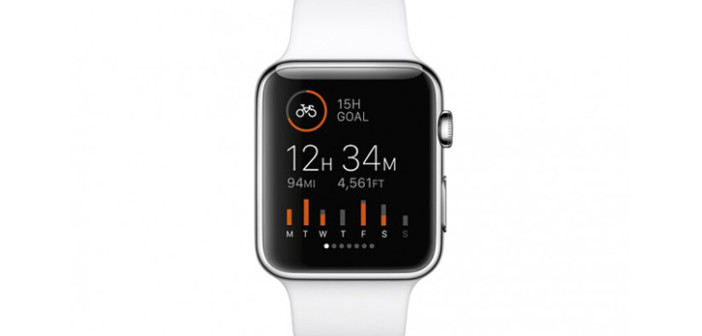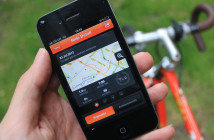Apple officially launched its much anticipated Watch at Apple Spring Forward event in San Francisco on Monday. Shortly thereafter, Outside Online posted: “Why the Apple Watch Will Be the Ultimate Fitness Wearable.” The tagline of the article is: The power of the crowd will have more to do with the success of the device than the features it will have when it debuts.
Like any piece of technology with an SDK or an API, there is always the hope that it will become greater than the sum of it’s parts. But in this case, I think many of the Watch’s ‘debut features’ are exactly the same features that will cripple its future success, at least in the eyes of hardcore outdoors people.
Apple Watch Sport
There are three models of the Apple Watch: the Watch, Sport, and Edition. As all Apple products are, they are engineering beauties. The Apple Watch Sport model is lighter and stronger; these two minor things put the watch into a ‘sport’ category. Features of the Apple Watch Sport include:
- 18 hour battery life
- daily fitness tracking stats, including heart rate
- splash resistant
- built-in heart rate sensor
- Wi-Fi and GPS
- starting price point: $350
Though Apple fanboys are staying loyal, I found many people around the internet implicitly agreeing about the Apple Watch. Many have come consensus; “I want one, but do I need one?” But fitness freaks should be asking the question: “I want one, but will it give me much my phone won’t?” Granted the watch form is something new for Apple, but as I think you’ll find out, it is a departure from the minimalist approach of a watch-only tracker.
The Reality
Of the many fitness-oriented specs the Apple Watch Sport has to offer, most create limiting factors that ripple throughout using this watch as a stand-alone fitness tracking device.
Heart-rate
One of the Apple Watch’s headliners is the built-in heart rate monitor. Reports indicate that wrist-based heart rate monitors are not nearly as accurate as we’d all like to think they are. And to use the wrist heart rate sensor, you must wear the watch band tight. If you consider how tight a typical abdomen heart-rate monitor must be worn, the wrist equivalent would be uncomfortable, especially during any sort of endurance event. And for those seeking a bit of comfort, I am skeptical how accurate the heart rate feature will be when the band is worn more casually (ahem… how most people wear watches…). If the heart rate data is inaccurate – it isn’t good data.
It just isn’t.
Skepticism aside, it’s great that developers will be able to make workouts tuned to your current level of fitness. But creating a custom workout based on questionable heart rate data may prove to be unhelpful. I think it’s clear that the Apple Watch cannot stand alone on the heart-rate monitoring front.
Stand-alone trackers
The move away from your smartphone to track runs and bike rides and the migration towards the watch-only model has been an ongoing trend (and more importantly – a GOAL) for the past 5 years. Companies like Garmin and Polar are taking over this market. Though the Apple Watch allows you to use the watch alone, you only get heart-rate, no GPS tracking.
If you have to carry your smartphone to get the other features, it kinda defeats the purpose of having the watch, huh?
This seems like a step back to me. Especially when you’re talking about a $350 heart rate monitor (that—as previously mentioned—may not work accurately).
Battery life
Need I say more? For now, when it comes to smart watches, most battery life is sub par. We have all been spoiled with analog watches, so anything will pale in comparison. But comparing the Apple Watch’s 18 hour battery to something like the FitBit Surge battery life of 7 days (for $100 less!), or the Polar A300—which provides 24 days of daily activity monitoring—blows Apple’s battery life out of the water.
Water resistance and durability
The device needs to match the athlete when it comes to fitness trackers . That’s the beauty of the (more modern) watch trackers. They are rugged, rubberized, and resistant – ready to take a beating from the elements. I am not convinced the Apple Watch is ready for this. Having a touch screen immediately makes it too dainty for anything more than a saunter with a stroller.
A trail run or a mountain bike ride would put the watch in danger (assumedly, you could put a screen protector on the Apple Watch – is this the return of the pocket protector?!). And if there is any more precipitation than some dripping sweat, even a screen screen protector won’t make this splash proof device ready for an unpredictable rain shower.
What is a step in the right direction?
So what is cool about Apple Watch, you ask?
Haptic notifications. Again, haptic notifications.
For those of you curious about what haptic notifications are, Apple says it best:
“it taps you on the wrist whenever you receive an alert or notification… the Taptic Engine creates a discreet, sophisticated, and nuanced experience by engaging more of your senses.”
-Apple
Outside feels this is a strong point of the new Watch, and I couldn’t agree more. There are unlimited ways this could be integrated into your workout routine. Milesplit updates, pace notifications, impending weather—the list goes on. These features could be handy for both running and cycling, and potentially reduce the texting-while-driving dynamic.
In conclusion
For casual day to day activity tracking, exemplification of style, and telling time—Apple Watch is great. And while Apple showed off a more versatile side of the Watch in presenting the capabilities of Strava on it’s new wearable, I don’t think this will be the hardcore Strava fans’ next toy. The Apple Watch Sport is not made for hardcore athletes. Hell, if you run Ultra-Marathons, the battery won’t even last the duration of the race.
The Apple Watch Sport is not made for hardcore athletes.
For $150, the Withings Activité Pop might be the best, most affordable, casual daily fitness tracking watch around. It doesn’t give you mile by mile stats, but it gives you a general idea of your activity level.
So basically: Apple Watch + Strava (or XYZ fitness tracker) = a DAMN expensive (and ultimately—limited) way to track your run or ride. But remember, you still need your phone with you.


